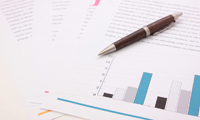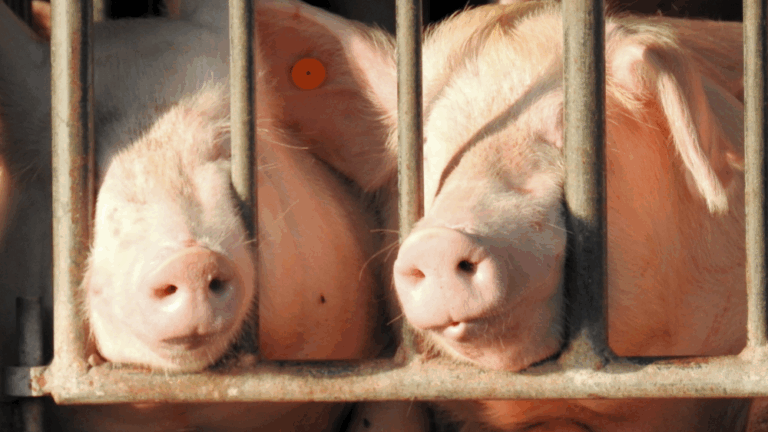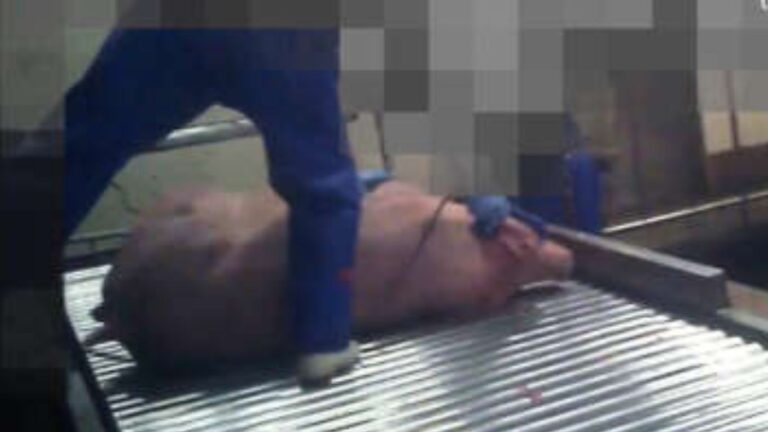■ Survey period: May through July 2016
■ Survey conducted by: NPO Animal Rights Center ;
■ Target of Survey: Slaughterhouses (177 facilities in operation) ;
■ Number of Respondents: 96 facilities (54% answered) *We did not include the facilities that mentioned only the kinds of animals they have in this count. ;
Kinds of Operated Animals
Cows: 78 facilities
Pigs: 79facilities
Other animals (sheep, goat, horses, etc.):30 facilities
*some facilities overlap
Drinking Situations
Animals can drink water any time before being slaughtered.
Cows: 55% Pigs: 25% Other animals: 21%
Cows
42 out of 77 facilities replied that their animals could drink water any time (55%).
65 facilities said animals have to wait longer than 10 hours until they get slaughtered. 37 out of these replied that animals have full access to water (57%).
| Max hours of waiting after arriving in slaughterhouses | Use shower as drinking water | Animals cannot drink | Animals can drink (not all the time) | Animals can drink any time | Total |
| More than 10 hours | 7 | 8 | 14 | 37 | 66 |
| 2 hours or more but shorter than 10 hours | 1 | 3 | 1 | 2 | 7 |
| Less than 2 hours | 2 | 2 | 4 | ||
| Unknown | 1 | 1 | |||
| Total | 8 | 13 | 15 | 42 | 78 |
Pigs
19 out of 77 facilities replied that their animals could drink water any time (25%).
69 facilities said animals have to wait longer than 10 hours until they get slaughtered. 17 out of these replied that animals have full access to water (25%).
| Max hours of waiting after arriving in slaughterhouses | Use shower as drinking water | Animals cannot drink | Animals can drink (not all the time) | Animals can drink any time | Total |
| More than 10 hours | 51 | 1 | 2 | 17 | 71 |
| 2 hours or more but shorter than 10 hours | 3 | 1 | 4 | ||
| Less than 2 hours | 1 | 1 | 1 | 3 | |
| Unknown | 1 | 1 | |||
| total | 55 | 3 | 2 | 19 | 79 |
Other animals (sheep, goat, horses, etc.)
6 out of 29 facilities replied that their animals could drink water any time (21%).
14 facilities said animals have to wait longer than 10 hours until they get slaughtered. 4 out of these replied that animals have full access to water (29%).
| Max hours of waiting after arriving in slaughterhouses | Use shower as drinking water | Animals cannot drink | Animals can drink (not all the time) | Animals can drink any time | Total | |
| More than 10 hours | 2 | 4 | 4 | 4 | 14 | |
| 2 hours or more but shorter than 10 hours | 3 | 7 | 10 | |||
| Less than 2 hours | 3 | 2 | 1 | 6 | ||
| total | 5 | 14 | 4 | 6 | 1 | 30 |
*Without transportation time
Equipment used to move animals
Cows
22 facilities replied that they use stun guns. 4 out of these, however, said it is “when it is necessary” or a “last resort”.
1 facility replied they use a flag (stick) *, ethical equipment just like a panel, which will be explained in supplementary item about method for moving animals.
* A stick with a flag on the edge to poke animals lightly.
| Electrical equipment such as stun guns | 22 |
| No equipment is used | 18 |
| Use Rope | 16 |
| Use Rope on bridles | 4 |
| Use Rope on nose rings | 4 |
| Automated conveyers | 4 |
| Wooden sticks | 2 |
| Panels | 2 |
| Branches | 1 |
| Hoses | 1 |
| Plastic hoses | 1 |
| Sticks | 1 |
| Iron sticks | 1 |
| Plastic bats | 1 |
| Electric winches | 1 |
| Flags | 1 |
| Total | 80 |
* Some replied “pushed by hand”, “move by humans”, or “moved by hand” respectively, which are included in “No equipment is used.”
* Some facilities overlap their replies.
* 9 facilities did not reply.
Pigs
39 facilities replied that they use stun guns. 5 out of these, however, said it is “when it is necessary” or a “necessity minimum”. Stun gun use for pigs is as high as 51% (39 out of 77 facilities.) On the other hand, panel use, considered an ethical method, is used by 20 facilities out of 77 (26%.)
| Electrical equipment such as stun guns | 40 |
| Panels | 20 |
| Plastic bats | 10 |
| No equipment is used | 6 |
| Automated conveyers | 4 |
| Wooden sticks | 4 |
| Plastic sticks | 3 |
| Rubber hoses | 3 |
| Rubber sticks | 2 |
| Hoses | 2 |
| Movable fences | 2 |
| Iron sticks | 1 |
| Plastic hoses | 1 |
| Plastic pipe | 1 |
| Flags | 1 |
| Total | 100 |
* Movable fences have boards to move pigs so as not to excite them.
* One replied they “tap by hand”, which is included in “No equipment is used.”
* Some replied “boards” or “Styrofoam boards”, which are included in “Panels.”
* Some facilities overlap their replies.
* 2 facilities did not reply.
Other animals (sheep, goat, horses, etc.)
| No equipment is used | 14 |
| Ropes | 6 |
| Panels | 3 |
| Electrical equipment such as stun guns | 2 |
| Wooden sticks | 2 |
| Total | 27 |
* Some replied they “push by hand” or “move by humans, which are included in “No equipment is used.”
* Some facilities overlap their replies.
* 4 facilities did not reply.
Supplementary item about method for moving animals
- According to the chapter 7.5, Slaughter of Animals in Terrestrial Animal Health Code by OIE equipment “should not be used repeatedly if the animal fails to respond or move.” Especially, “Electric goads and prods should only be used in extreme cases and not on a routine basis to move animals.” Even when no equipment is used, painful procedures, including kicking, tail twisting, use of nose twitches, should be avoided. Also, they suggest useful goads, including panels, flags, plastic paddles, flappers (a length of cane with a short strap of leather or canvas attached), plastic bags and metallic rattles; they should be used in a manner sufficient to encourage and direct movement of the animals without causing undue stress.
There are many methods used overseas that do not force animals with equipment. For example, obstacles to which animals tend to shrink back from, such as sudden changes in light, yellow boots worn by workers, workers’ clothes hung on slopes, shadow forward, are removed.
The chapter 7.5, Slaughter of Animals in Terrestrial Animal Health Code by OIEalso directs how animals should be moved smoothly. The Animal Rights Center submitted a proposal to slaughterhouses with the method in the chapter.
http://www.hopeforanimals.org/animals/slaughter/00/id=416 (JP Only)











